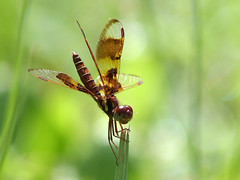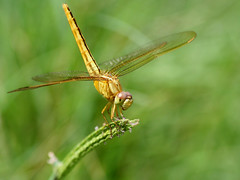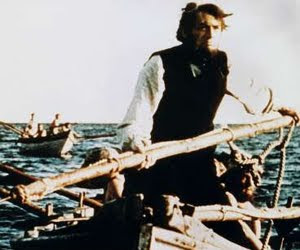 One was an Eastern amberwing perching in the grass beside the sidewalk. I know that she's a she from the smudges on the wings; males have mostly unmarked wings. This photo isn't my best female amberwing, but she was a cooperative subject, and I appreciated her tolerating my phallic 300 mm lens pointed at her face. I think that if I Photoshop the eyes so that they aren't so dark, the picture will be decent. I am planning to learn layers during my break between semesters so that I can fine-tune specific areas of a picture.
One was an Eastern amberwing perching in the grass beside the sidewalk. I know that she's a she from the smudges on the wings; males have mostly unmarked wings. This photo isn't my best female amberwing, but she was a cooperative subject, and I appreciated her tolerating my phallic 300 mm lens pointed at her face. I think that if I Photoshop the eyes so that they aren't so dark, the picture will be decent. I am planning to learn layers during my break between semesters so that I can fine-tune specific areas of a picture. On the path through the wetland, I caught a yellow sparkle out of the corner of my eye. I discovered a beautiful female scarlet skimmer near the water's edge. The dark line down her abdomen indicates her species, the yellow her gender. I love that the tiny grass seed flowers complement the pink in her eyes. And I am always pleased to find something new.
On the path through the wetland, I caught a yellow sparkle out of the corner of my eye. I discovered a beautiful female scarlet skimmer near the water's edge. The dark line down her abdomen indicates her species, the yellow her gender. I love that the tiny grass seed flowers complement the pink in her eyes. And I am always pleased to find something new.I think that this photo is one of my best dragonfly captures. I like the depth of field and the rarity of the picture—I don't see many yellow dragonflies at any of the Flickr groups.
I anticipated lots of comments after I published this picture to my Flickr stream. That, however, has not been the case. Since last Sunday when I posted it, I have received only 13 views and 2 comments, many fewer than a dragonfly picture of mine usually gets. I don't know—maybe it's too green and yellow; there are no strong contrasts in color. Maybe the thumbnail that shows up on a person's "Contacts" page or in a "Group" collection isn't interesting enough to click on for the larger option.
I know that the number of comments by Flickr members does not mean that a picture is any good. Folks cultivate attention by making lots of comments on other people's work; those recipients feel obligated to return the favor. Flickr is often MySpace for adults, an online hangout where fragile egos get boosted with positive [though often undeserved] feedback. I have seen some ugly photos get tons of comments while real art [if the person doesn't have a huge Flickr audience] gets hardly any attention.
As proof, I give you the photo below, which, in my opinion, has uninteresting subject matter [a dragonfly ass!], bad composition, and distracting color. It, however, has earned its photographer 85 comments and 617 views as of this writing.

Compare it to this photo, by geckonia, one of my contacts. This is a brilliant capture; I'm thinking about contacting the artist to ask if I can buy a print. Despite its beauty, it has only 3 comments [one of them mine!] and 31 views.

Even though neither of my two "girls" from the Greenwood Urban Wetland garnered much Flickr attention, I still like them. I have that stubborn allegiance to my art that lack of Flickr attention cannot sway!


























